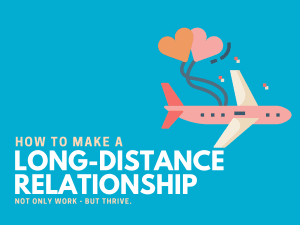Of the identities within the LGBTQIA+ community, the term “asexual” is probably one of the more commonly misunderstood. Some people don’t even know that the “A” in LGBTQIA+ stands for asexual; they mistakenly believe is stands for “ally.”
An asexual person might feel like people perceive them as unfeeling robots, which couldn’t be further from the truth.
In a culture that privileges sexual attraction and sexual relationships, asexuals commonly feel left out of the conversation. Contrary to popular belief, asexual people can still have healthy, happy romantic relationships.
Not sure what it means to be on the asexuality spectrum? Here’s a guide to the basics on the asexual identity.
Author’s Note: While I am a part of the LGBTQIA+ community, I myself am not asexual. I can explain the definition of these terms, but relay not the lived experience of someone who is asexual or aromantic. To further your understanding of the terms, follow up with sources written by people who identify as asexual.

The Asexual Definition
If you ever find yourself unsure of a definition of an LGBTQIA+ identity, a great place to start is The Trevor Project. This site has a wealth of information available for you to learn more about different identities without making people in the community do all the work for you.
The top of the Trevor Project page on asexuality says “Love doesn’t equal sex.” This statement gives you a great starting point for understanding the roots of the asexuality spectrum.
Some definitions for asexuality will tell you that someone who identifies as asexual feels no sexual attraction.
This statement does not hold true for every asexual.
Asexuality Meaning
Asexuality comes on a spectrum with several other sub-identities. Many people who identify as on the asexual spectrum may never experience sexual attraction, but there are others, such as demisexuals or grey-asexuals, that only experience sexual attraction rarely or under specific circumstances.
It’s true: some people who identify as asexual have a complete lack of sexual attraction. But there are identities under the umbrella of asexuality that do experience some level of that attraction.
Demisexuals will only experience a sexual attraction once they form a deep emotional connection with someone. Grey-A encompasses what someone feels if they don’t think they fit well under sexual or asexual. They’re somewhere on the spectrum in between.
And just because someone chooses an identity to explain themselves doesn’t mean they’re stuck in that definition forever. Someone who identifies as asexual could meet someone in their forties, form a deep bond with them, and realize that the term demisexual applies better; they just had never met someone that makes them feel that way before.
This does not mean you can tell someone that identifies as asexual that they “just haven’t found the right person yet.” No one can know their sexuality better than they do. Don’t tell them how they should and shouldn’t feel. Until they offer you different terms to describe them, you use the terms they told you to use.

A Lack of Sex Does Not Equate to Asexuality
Just because you are not having sex does not mean you experience asexuality. There are many religious and experience-based reasons someone would choose not to engage in sex.
Asexuality is not someone who:
- Chooses celibacy for religious or personal reasons.
- Avoids sex due to past sexual trauma.
- Experiences any type of sexual dysfunction.
- Cannot find a sexual partner.
- Avoids sex for health or safety reasons.
Just because you are not having, or cannot have, sex does not mean you are necessarily asexual.
Conversely, someone on the asexual spectrum may choose to have sex for any number of reasons, including for their own pleasure or to have children. Asexuality is not dependent on whether or not someone has sex.

Asexual vs Aromantic: The Key Differences
Your romantic orientation and sexual orientation are not the same thing.
Asexuality is a sexual orientation, meaning it pertains to someone’s level of sexual attraction.
Aromantic is a romantic orientation, meaning it pertains to who someone will or will not be attracted to romantically.
Someone who identifies as asexual can experience romantic attraction and have a happy, healthy relationship with someone. People in the ace community who experience romantic attraction will commonly explain their sexuality and romantic orientation by saying “asexual” and the right prefix before romantic. For example, someone could be:
- Asexual biromantic
- Demisexual heteroromantic
- Queerplatonic panromantic
This joint terminology separates how they experience sexual attraction and what type of person they could feel a romantic attraction for.
Again: not all loving relationships require a sexual component.
Take love languages for example; every person has one or a few love languages they receive and give love through most effectively. Some people feel loved when they receive physical touch. And some don’t.
The act of sex is not required to validate or legitimize a relationship. You don’t need to feel sexual attraction for your spouse to truly love them.

The Asexual Flag
Like most sexualities, the ace community has a flag to represent their sexuality.
The umbrella term of asexuality has a flag, but each specific sexuality underneath the term has their own as well. If you identify as asexual aromanitc, you can use both the asexual and aromantic flag.
Gender identities also have their own flags. If you are trans, asexual, and biromantic, you can use all three flags.
The asexual flag has four colors: black on top, gray second from the top, white second from the bottom, and purple on the bottom. The hex codes for each color are as follows:
- Black: #000000
- Quick silver: #A4A4A4
- White: #FFFFFF
- Patriarch: #810081

Not All Asexuals Experience Their Sexuality the Same Way
Sexual, romantic, and gender identities as they are defined are just the starting point. You don’t need to identify with the same exact type of romantic feelings or level of sexual desire as someone else who uses the same label.
The different identities are there to empower you and give you the sense that you are not alone. Asexual visibility can change the way young people (and people of any age) feel about themselves. Teens are practically expected to feel sexual attraction. Someone who doesn’t yet know that they are asexual may feel like an outcast when they don’t have a crush to share during Truth or Dare.
But when we are open about the fact that there are different kinds of attraction, both sexual and asexual, we can make people feel like they aren’t alone.
Author, Artist, Photographer.
Sarah Margaret is an artist who expresses her love for feminism, equality, and justice through a variety of mediums: photography, filmmaking, poetry, illustration, song, acting, and of course, writing.
She owns Still Poetry Photography, a company that showcases her passion for capturing poetic moments in time. Instead of poetry in motion, she captures visual poetry in fractions of a second, making cherished keepsakes of unforgettable moments.
She is the artist behind the Still Poetry Etsy shop, which houses her illustrations and bespoke, handmade items. She is the author of intricacies are just cracks in the wall, a narrative poetry anthology that follows a young woman discovering herself as she emerges from an abusive relationship.
- Sarah Margaret Henryhttps://www.womensbusinessdaily.com/author/sarah-margaret-henry/
- Sarah Margaret Henryhttps://www.womensbusinessdaily.com/author/sarah-margaret-henry/
- Sarah Margaret Henryhttps://www.womensbusinessdaily.com/author/sarah-margaret-henry/
- Sarah Margaret Henryhttps://www.womensbusinessdaily.com/author/sarah-margaret-henry/






